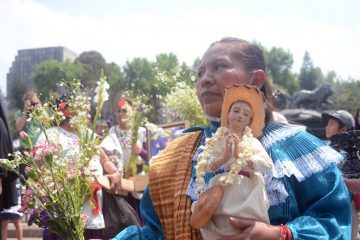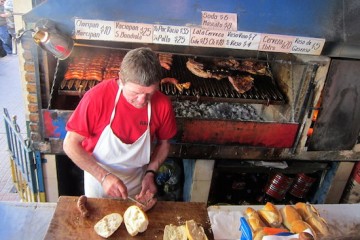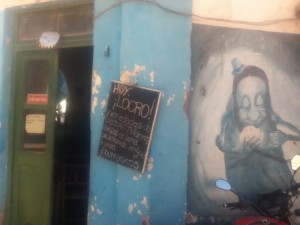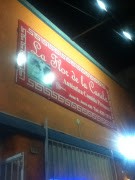Mexico City has a new Saint and it Protects Against Gentrification
Without – one assumes – papal consent, artists in two Mexico City neighborhoods have created and venerated their very own patron saint, Santa Mari de Juaricua, protectress against gentrification.
Santa Maria de Ribera and Juarez are two adjoining neighborhoods in CDMX which have been hit hard in recent years by gentrification – victims, not unlike many neighborhoods in cities like San Francisco and New York, of their own attractive attributes, which include centrality, historical significance, architectural pulchritude and, last but not least, a certain indefinable there-ness.
Juarez and Ribera are perilously close to two metropolitan object lessons: Colonia Roma and Colonia La Condesa. Like the Mission District or the Lower East Side, these two neighborhoods were known at one time as places where artists, musicians and assorted criminal scum could lollygag about in turn-of-the-century candlelit Rimbaud-esque splendor far from the choking drawing room perfumes and oppressive social mores of respectable society. Also like the aforementioned American boroughs, Condesa and Roma hadn’t always been possessed of that character. For instance, Colonia Roma began life on the edge of the city in 1903 as a planned community for the wealthy – who then decamped in Cadillacs and Chryslers a half-century later for what they perceived to be the greener pastures of the suburbs since-metastasized far beyond the borders of their gentile community.
Colonia Roma’s history is a complex one, but suffice to say it was a victim of its own boho charm, a coolness which inevitably attracted those wishing to be hip by association.
Saint Mari de Juaricua first appeared in the Juarez neighborhood at 28 Calle General Prim in 2016. In short order, locals flocked to it for protection against that tiresomely ubiquitous urban process whose implacability can seem glacier-like.
Among those vulnerable to displacement are indigenous communities living mainly in the Juarez area; they’ve made their presence especially known in the processions – demonstrations led by the beatified statuette lovingly cradled in residents’ arms – that take place on the city streets, garlanding the saintly figurine with flowers and singing songs.
Often rising up from these processions is the murmur of prayer. But instead of “Give us this day our daily bread”, the chant born on the winds whistling through the streets of Juarez and Ribera is likely to be “Save us from bad practices, from displacement and eviction, from excessive rent hikes, from skyrocketing property taxes, greedy landlords and bad real estate. Save us from gentrification.”
Santa Mari de Juaricua is about a foot-and-a-half high and wears a simple white dress with a purple sash tied around the waist, a wide-brimmed hat, huaraches and a pair chunky eye glasses. She is white and rosy-cheeked – an ironic reference, perhaps, to one of the most common features of gentrification: white-washing.
But Sandra Valenzuela, co-founder of the confraternity of Santa Mari la Juaricua, cautioned against racial scapegoating in a statement made to international publication El Pais.
“You always hear talk about the ‘malevolent, rich white people’ pushing out the poor, but it’s a much more complex problem that has to do with a lack of real estate regulations and government corruption,” Valenzuela explained.
Sound familiar?
Whether the city fathers of Mexico City take notice of this sly form of social protest against economic injustice remains to be seen.
In the meantime, if you live in a part of the Bay Area which is still marginally affordable (unlikely) – perhaps with some nice old craftsmen houses from the 1910s and low commercial buildings lined with handsome 19th Century molding – keep a sharp eye out for, say, coffee served with a two paragraph explanation of origin and flavor profile (hints of horse shit), or grown men carrying Depression era bindles. If you notice these undeniable harbingers of imminent displacement, signs that soon you and the rest of the community will be pried loose like nails from a two-by-four from your neighborhood by the crowbar of an uncontrolled real estate market, whip out a small knife and whittle yourself a saint.
Post script: It’s probably pointless at this juncture for San Francisco to create its own anti-gentrification saint, but if there is to be one, then I move that rather than inventing its own, the city conscripts for this duty St. Jude, patron saint of lost and desperate causes. Other, less pessimistic suggestions are welcome.











